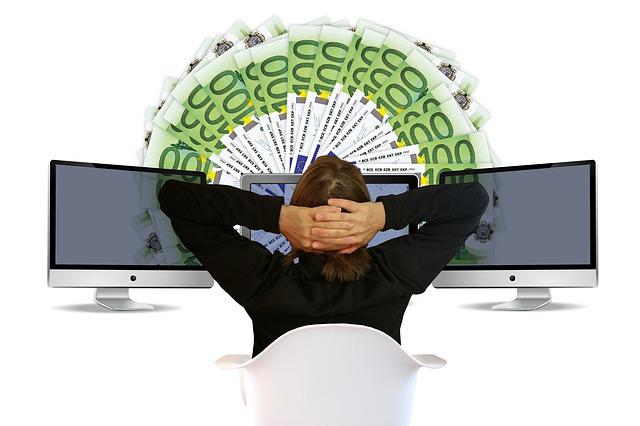Preparing For Financial Disaster: How to Make Your Money Work for You
An emergency or rainy day fund is an essential tool to help cover expenses in case of job loss or other emergencies. These savings are also a great stress reliever, as they let you feel more confident.
An emergency fund is one of the tools you can use to mitigate your risks when unexpected things happen, such as job loss, car trouble or an accident, or a medical emergency. Ideally, you want to build an emergency fund, life and disability insurance coverage, and a policy with living benefits.
What is an emergency fund?
Everyone has experienced a financial emergency. It may have been a hefty medical bill, an appliance repair or replacement, a traffic accident, or a cracked cellphone. These unexpected expenses seem to occur at the worst times.
An emergency fund is a cash reserve expressly set aside for unplanned expenses or financial emergencies. Some common examples include car and home repairs, medical bills, or a loss of income.
You should consider opening an account at a bank you currently don’t use, and automate deposits to that account. You may find it empowering to have options, even if the money is from a passive income gig.
In general, you can use emergency savings for large or small unplanned bills or payments that are not part of your routine monthly expenses and spending.
How do I start an emergency fund?
Setting money aside for emergencies can seem like an overwhelming process. However, there are steps you can take to ensure you are putting enough funds aside to cover yourself in unexpected situations.
Start Small
Ideally, your emergency fund should be enough to cover your expenses for three to six months. Your goal for saving should reflect your risks and expenses.
Having an emergency fund with three to six months of expense money can seem like a formidable goal. To get started, start a dedicated savings account and automate an amount to be moved into the account weekly or monthly.
Your emergency savings account goal depends on your situation. Think about the unexpected expenses you’ve had in the past and how much they cost. Consider these types of situations when deciding how much you should save.
Be Consistent
Remember that even a tiny amount of money set aside can provide a degree of financial security. As you pay down bills or increase your income, adjust the amount you have automatically transferred each month.
Even if it’s just $10 or $25 a month, get used to budgeting and making regular contributions to your savings. Over time, you can begin to increase the amount as you’re able. Even if you are starting small, you are still beginning somewhere.
Make One-Time Additions to Your Emergency Fund
Find additional sources of income to make contributions to your emergency funds. Consider ways to boost your emergency savings by adding funds from selling household items you no longer use.
Consider selling your kitchen gadgets, books, hobby supplies, electronics, and kids’ old toys. You can sell these items at a community yard sale, on social media, or on a site like eBay. If you have vintage or handmade items, you can sell them on Etsy.
Consider getting a side hustle, like selling bread or produce from your garden at a neighborhood farmers’ market. You might enjoy driving a few nights a month for rideshare companies or a shopping service like Instacart.
If those ideas aren’t something you can do right now, you can temporarily cut back on your expenses. You might cancel a streaming service for a year, cut back on dining out, and pack your lunch for a while. Add these savings to your emergency funds.
Don’t Procrastinate on Finances
Ensure you have the basics covered, like food, rent, and medications. Then build your savings plan, which may take time. Add whatever you can as you receive extra funds such as a birthday check.
Take this time to learn more about personal finance and budgeting. Read up on investing. Set goals, and when you reach a goal, congratulate yourself and set another goal.
Putting off starting your emergency savings is only inviting trouble. As we emerge from the pandemic and you establish good financial habits, guard against lifestyle creep — the urge to increase your budget as your income grows.
Set a Specific Goal for Yourself
Once you have established an emergency account, decide on the minimum amount to keep in it. Ideally, you will set up an account at a bank or credit union.
If you aren’t comfortable with that, you could save cash or buy larger generic cash cards. The important thing is to have funds you won’t access.
If your goal is $1,000, but you’re $200 short, find a way to cut back on your expenses by however much you can. If you can trim $50 a month, you’ll have your $1,000 in just four months.
Once you meet your goal, you can go back to spending as usual. Just keep your regular automatic deposit each month.
Establish a Firm Financial Footing
Take this opportunity to establish yourself on a firm financial footing. Set attainable goals, and build a good savings habit. Start small and adjust your goals as your situation changes.
Learning about budgeting and tracking your expenses can help create good habits and increase self-confidence. You will also find reduced stress levels and a better sense of well-being.
Without emergency savings, even a minor financial setback can feel catastrophic. It could even turn into debt, further adding to your financial woes.
As you begin to see progress, be sure you are taking advantage of any opportunities to save or invest. Saving automatically through your employer, which may offer employer-based contributions for retirement, is a convenient way to increase your security.
When to Dip Into Your Emergency Fund
An emergency fund is meant for use to cover an emergency. You will want to be cautious in deciding exactly what situations and expenses meet the criteria of an emergency worth dipping into your emergency account.
Plan to spend emergency funds in cases such as an unexpected illness or job loss. Other possible qualifying expenses might be unanticipated medical expenses, car breakdowns, or other such unexpected events.
Make sure you understand how your car works in general so that you have a basic understanding of when it might need serious repairs. Your goal is to handle things like housing and auto maintenance and repairs without touching your emergency fund.
Manage Your Cash Flow
Cash flow is the timing of your income and outflow of money. If the timing of your income and outflow are out of sync, you might find that you are running short at the end of the week or month. If you track your expenses and income, you may begin to see opportunities to adjust your spending and savings.
You may even want to talk to creditors and see if you can adjust the due date on some of your bills. This is one crucial first step in managing your money, regardless of your income.
You will find that having a solid emergency plan and savings account will help you sleep at night and enjoy your day with less stress and more confidence.

Alexandra Arcand writes and researches for the life insurance comparison site, QuickQuote.com. She is a finance expert who enjoys sharing her savings knowledge with others to help them grow their emergency funds.

